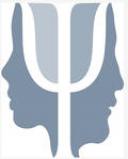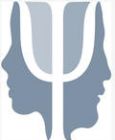Cognition
Think Critically Before Thinking Critically
The source of information is often as important as the information itself.
Posted February 11, 2020 Reviewed by Daniel Lyons M.A.
This post is by Jeffrey A. Greene and Brian M. Cartiff of the University of North Carolina at Chapel Hill.
The Internet’s superabundance of information (Lankshear et al., 2000) has led to a “data smog” (Shenk, 1998) of mis- and dis-information (Wardle, 2019). This vast proliferation of dangerous information is particularly concerning given more and more people are primarily getting their news online (Fedeli & Matsa, 2018).
To help people cut through the smog, policy-makers, educators, and parents have called for a greater focus on teaching critical thinking in schools. But what is critical thinking, and can we really expect people to engage in such thinking consistently and successfully across the many topics they encounter every day? In short, the answer is no.
Concerns about people’s critical thinking, or lack thereof, extend back to the time of Plato and his stories of Socrates as the gadfly of the Athenian state and marketplace, stinging and questioning people to make them aware of their lazy and complacent thought processes. In the early 20th century, the pragmatic philosopher John Dewey pointed out that American schools were not helping students learn how to think deeply and reflectively about ideas; instead, he argued they overemphasized specific content knowledge.
Dewey claimed that the major aim of schools should be to teach critical thinking, which he defined as the “active, persistent, and careful consideration of any belief or supposed form of knowledge in the light of the grounds that support it and the further conclusions to which it tends” (Dewey, 1933, p. 9). Modern scholars including Paul (1992), Facione (1990), and Ennis (1991, 1996) have argued that critical thinking involves dispositions such as being open-minded and intellectually flexible (i.e., being willing to look at ideas from multiple perspectives) and skills such as being able to reflect on ideas and one’s own biases.
Other definitions of critical thinking focus on the “ability to engage in purposeful, self-regulatory judgment” necessary for problem-solving, reasoning, and conceptual understanding (Abrami et al., 2008, p. 1102). Regardless of the definition used, researchers have shown that people struggle to learn how to think critically, particularly when they are taught those skills outside of an academic discipline or setting, such as in “general critical thinking” courses (Abrami et al., 2015; Willingham, 2007).
Why is critical thinking so difficult for people to do well? Perhaps it is because critically evaluating information requires a tremendous amount of prior knowledge and a disposition for questioning the data and oneself, neither of which is easy to acquire. Even relatively knowledgeable people can struggle to think critically. Medical students are prone to start diagnosing themselves with the illnesses they are learning about (i.e., medical student disease; Hunter et al., 1964; Woods et al., 1966). With extensive training and experience, medical students gain knowledge to appropriately contextualize and interpret symptoms and other related health information; that is, they learn to think critically about the evidence to make appropriate diagnoses.
Similarly, the proliferation of medical information sites like WebMD has led people to diagnose themselves in ways similar to medical students (Starcevic & Berle, 2013). However, research has shown that online symptom checkers are accurate only about one-third of the time (Semigran et al., 2015), leading doctors and scholars to recommend that most people avoid using the Internet for researching illness-related information altogether (Doherty-Torstrick et al., 2016). Thus, expecting people to think critically about medical or technical, scientific information is unrealistic because most people are not medical experts; they do not have the appropriate training nor the necessary vast amounts of specific, medical knowledge.
The modern world requires critical thinking about a large variety of topics, ranging from biology (e.g., vaccines) to political science (e.g., constitutional procedures) to psychology (e.g., confirmation bias). Yet, research has shown that it is difficult to become an expert in even one area, let alone many (Collins, 2014; Ericsson et al., 2018). So, how can we help people successfully deal with all the information they encounter, and often seek out, online and elsewhere?
The answer lies in redefining critical thinking. Good critical thinkers know when they have the disciplinary knowledge necessary to directly evaluate reasoning and evidence (i.e., first-order reasoning; Chinn & Duncan, 2018). Likewise, good critical thinkers have the self-knowledge and metacognitive skills to know when they do not possess the necessary knowledge, skills, or training to directly evaluate the evidence, and instead should shift to determining which experts or sources to believe about the topic (i.e., second-order reasoning; Chinn & Duncan, 2018).
Thus, good critical thinking sometimes requires only first-order reasoning but more often needs both the metacognitive skills to determine when second-order reasoning is required instead (Barzilai & Chinn, 2018), as well as the skills to determine reliable sources (Brante & Strømsø, 2018; Greene, 2016). Second-order reasoning skills can be taught and learned. As but one example, the Stanford History Education Group has developed a Civic Online Reasoning website with tools and curricula.
In sum, many modern scholars, employers, policymakers, and educators (e.g., Tsui, 2002) agree with Dewey that critical thinking should be a “fundamental aim and an overriding ideal of education” (Bailin & Siegel, 2003, p. 188). However, the “data smog” created by the vast amounts of often contradictory information found on the Internet calls for new views of what critical thinking involves. If people happen to have the disciplinary expertise, background knowledge, and skills to competently evaluate information and evidence about a particular topic, then they can engage first-order reasoning, which includes enacting the dispositions and cognitive skills that many critical thinking scholars have discussed in the past.
At the same time, when people do not possess such knowledge and skills, which describes most of us much of the time, apt critical thinking would involve realizing the need to switch to second-order reasoning: comparing and evaluating the sources of the information using these same dispositions and skills (Barzilai & Chinn, 2018; Wineburg & McGrew, 2017). Thus, people should think critically about thinking critically, and in many cases, evaluate the sources of information rather than the information itself.
References
Abrami, P. C., Bernard, R. M., Borokhovski, E., Waddington, D. I., Wade, C. A., & Persson, T. (2015). Strategies for teaching students to think critically: A meta-analysis. Review of Educational Research, 85(2), 275-314. https://doi.org/10.3102/0034654314551063
Bailin, S., & Siegel, H. (2003). Critical thinking. In N. Blake, P. Smeyers, R. Smith, & P. Standish (Eds.), The Blackwell guide to the philosophy of education (pp. 181–193). Oxford, UK: Blackwell.
Barzilai, S., & Chinn, C. A. (2018). On the goals of epistemic education: Promoting apt epistemic performance. Journal of the Learning Sciences, 27(3), 353–389. doi:10.1080/10508406.2017.1392968
Brante, E. W., & Strømsø, H. I. (2018). Sourcing in text comprehension: A review of interventions targeting sourcing skills. Educational Psychology Review, 30(3), 773-799.
Chinn, C. A., & Duncan, R. G. (2018). What is the value of general knowledge of scientific reasoning? In K. Engelmann, F. Fischer, J. Osborne, & C. A. Chinn (Eds.), Scientific reasoning and argumentation: The role of domain-specific and domain-general knowledge (pp. 460-478). New York, NY: Routledge.
Collins, H. (2014). Are we all scientific experts now? Cambridge, UK: Polity.
Dewey, J. (1933). How we think: A restatement of the relation of reflective thinking to the educative process. Boston, MA: D.C. Heath and company.
Doherty-Torstrick, E. R., Walton, K. E., & Fallon, B. A. (2016). Cyberchondria: Parsing health anxiety from online behavior. Psychosomatics, 57(4), 390–400. https://doi.org/10/ggcm5z
Ennis, R. H. (1991). Critical thinking: A streamlined conception. Teaching Philosophy, 14(1), 5-24. https://doi.org/10.5840/teachphil19911412
Ennis, R. H. (1996). Critical thinking dispositions: Their nature and assessability. Informal Logic, 18(2-3), 165-182. https://doi.org/10.22329/il.v18i2.2378
Ericsson, K. A., Hoffman, R. R., Kozbelt, A., & Williams, A. M. (Eds.). (2018). The Cambridge handbook of expertise and expert performance. Cambridge, UK: Cambridge University Press.
Facione, P. A. (1990). The Delphi report: Committee on pre-college philosophy. Millbrae, CA: California Academic Press.
Fedeli, S., & Matsa, K. E. (2018, July 17). Use of mobile devices for news continues to grow, outpacing desktops and laptops. Retrieved from https://www.pewresearch.org/fact-tank/2018/07/17/use-of-mobile-devices-…
Greene, J. A. (2016). Interacting epistemic systems within and beyond the classroom. In J. A. Greene, W. A. Sandoval, & I. Bråten (Eds.). Handbook of epistemic cognition (pp. 265-278). New York: Routledge.
Hunter, R. C. A., Lohrenz, J. G., & Schwartzman, A. E. (1964). Nosophobia and hypochondriasis in medical students. The Journal of Nervous and Mental Disease, 139(2), 147-152. https://doi.org/10.1097/00005053-196408000-00008
Lankshear, C., Peters, M., & Knobel, M. (2000). Information, knowledge and learning: Some issues facing epistemology and education in a digital age. Journal of the Philosophy of Education, 34(1), 17–39. https://doi.org/10/bkn52d
Paul, R. (1992). Critical thinking: What every person needs to survive in a rapidly changing world (2nd edition). Rohnert Park, CA: Foundation for Critical Thinking.
Semigran, H. L., Linder, J. A., Gidengil, C., & Mehrotra, A. (2015). Evaluation of symptom checkers for self diagnosis and triage: Audit study. The BMJ, h3480. https://doi.org/10/gb3sw7
Shenk, D. (1997). Data smog: Surviving the information glut. San Francisco, CA: Harper Edge.
Starcevic, V., & Berle, D. (2013). Cyberchondria: Towards a better understanding of excessive health-related Internet use. Expert Review of Neurotherapeutics, 13(2), 205–213. https://doi.org/10/f4pknn
Tsui, L. (2002). Fostering critical thinking through effective pedagogy: Evidence from four institutional case studies. Journal of Higher Education, 73(6), 740–763. https://doi.org/10.1080/00221546.2002.11777179
Wardle, C. (2019, September). Misinformation has created a new world disorder. Scientific American, 88-93.
Willingham, D. T. (2007). Critical thinking: Why is it so hard to teach? American Educator, 8-19.
Wineburg, S., & McGrew, S. (2017). Lateral reading: Reading less and learning more when evaluating digital information. SSRN Electronic Journal. doi:10.2139/ssrn.3048994
Woods, S. M., Natterson, J., & Silverman, J. (1966). Medical students’ disease: Hypochondriasis in medical education. Journal of Medical Education, 41(8), 785-790. https://doi.org/10.1097/00001888-196608000-00006




